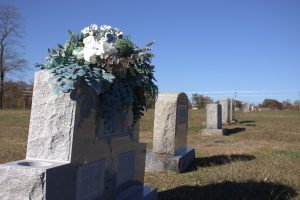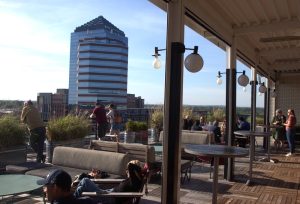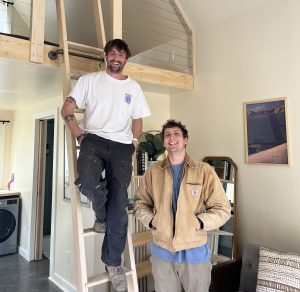There’s a unique group of Durham residents who don’t think too often about the politics of City Hall.
They don’t vote or sign petitions. They don’t read or watch the news. Even when their neighborhood, part of a 215-acre chunk of city-owned land, is on the agenda, they don’t send emails or show up to make public comments.
They’re too busy working to maintain their homes — four-foot-wide nests, built high above the wetlands — and feeding their young, who look like winged monsters from a prehistoric era.
Around 160 great blue herons and great egrets gather annually above a beaver marsh in northeast Durham between East Club Boulevard and Falls Lake. The area is one of the birds’ only known nesting sites, or rookeries, in piedmont North Carolina. In the spring, dozens of trees fill with these huge birds, known collectively as a siege. Newly hatched chicks wait with their beaks pointed to the sky, ready for their parents, some with wingspans as wide as six feet, to return and regurgitate chewed-up fish into their eager mouths.
“If you live in Durham, and if you’ve ever seen a heron, chances are you’re looking at a heron that raises its young, or was raised in this area,” Chris Dreps, land protection director for the Ellerbe Creek Watershed Association, a Durham-based conservation nonprofit, told The 9th Street Journal.

While other parts of Durham have seen a familiar debate about preservation versus expansion, there hasn’t been a line of developers trying to build condos near the herons. Most of the land can’t be developed, Dreps said, because it’s situated in a 100-year floodplain.
“Here’s a huge opportunity to protect the biggest piece of land that the City of Durham is ever going to protect….And they already own it!” Dreps said. “It’s probably the most important land project we’ll ever work on as an organization.”
While the Ellerbe Creek association and Durham city staff worked together cordially through the process, they have different ideas on how best to preserve the site.
At a City Council work session on April 20, members of the Ellerbe Creek group pushed for a designated nature preserve, which would require the city to draw up a legal agreement with the state, “ensuring conservation and prohibiting deforestation and urban development.”
The city could “allow activities consistent with maintaining natural resources – such as research, education and low-impact recreation” under an agreement so permanent that it could only be undone by the governor and other state executives. The land would remain under city ownership and management.
Rickie White, the Ellerbe Creek executive director, argued for state protection. “The whole point of permanent conservation is for it to be permanent. We want to prevent future folks from coming in and developing this section of the property,” he said at the work session. Conservationists like White worry that future city leaders may not prioritize the herons and their habitat.
The latest proposal, which would take 9-12 months and cost some $100,000, is an updated version of plans first discussed last year.
Compromises between the state, the city, and the watershed association resulted in a decrease in proposed size from 284 to 215 acres. Part of that reduction included a carveout for the possible Northern Durham Parkway, a currently unfunded project that, if built, would bisect the site while avoiding the heron rookery.
David Fleischer, summarizing the findings of the general services department, said that city staff recommended against involving the state. Doing so would limit Durham’s future ability to use the land, and the state could fine the city for misuse, he said. Fleischer recommended instead that the city register the site as a heritage area, a less restrictive designation.
“Doing so would provide the flexibility for future use of the property by the city as is needed, while also accomplishing the aims or goals of all parties involved to protect the property,” he told the Council.
The proposed preserve is home not only to herons, but also to a closed city landfill. Fleischer mentioned possible future maintenance needs, including “additional gas probes, wells, or other infrastructure to monitor any changes to the plume of the landfill as it settles and ages,” efforts that may violate any agreement with the state.
The topic is on the City Council’s May 1 agenda.
Regardless of the council’s decision, the heron hatchlings at the rookery are getting bigger by the day. A few weeks from now, some of them will be big enough to learn how to fly. They’ll be ready to leave the nest and join their parents in searching for fish across the shrinking wetlands of the expanding Bull City.
Above: Images of great blue herons and great egrets at their rookery in northern Durham, from a video posted by the Ellerbe Creek Watershed Association. Video by D.L. Anderson.









